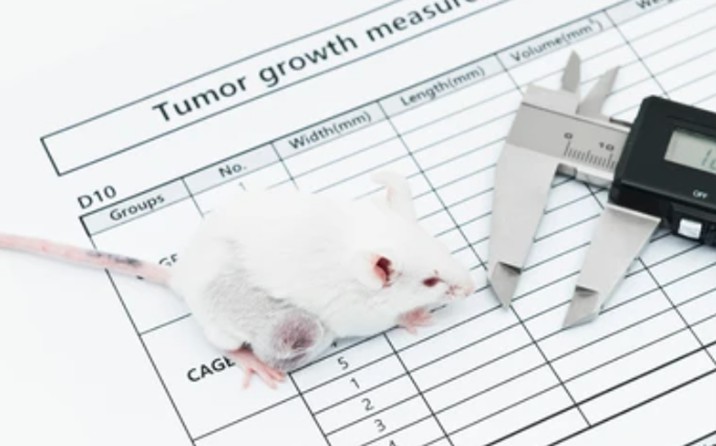Summary of Advantages and Limitations of Different Oncology Animal Models
Oncology research plays a crucial role in understanding cancer biology, developing effective therapies, and improving patient outcomes. Animal models have been instrumental in advancing our knowledge in this field, allowing scientists to study tumor initiation, progression, and treatment responses. By understanding the strengths and weaknesses of these models, researchers can make informed decisions when choosing the appropriate model for their specific research needs.

Transgenic Mouse Models
Transgenic mouse models have revolutionized cancer research by enabling the introduction of specific genetic alterations found in human tumors. These models are created by introducing transgenes or altering endogenous genes in the mouse genome, resulting in the development of tumors that mimic human cancers.
- The advantages of transgenic mouse models are evident in their ability to faithfully recapitulate the genetic and molecular characteristics of human tumors. By introducing specific oncogenes or tumor suppressor gene mutations, researchers can study the effects of these genetic alterations on tumor development and progression. Transgenic mouse models also provide a controlled environment for studying the impact of individual genetic changes on tumor biology.
- However, there are limitations to consider when using transgenic mouse models. Firstly, the process of generating and maintaining these models can be time-consuming and costly. Additionally, the lack of tumor heterogeneity in these models may not accurately represent the complexity seen in human tumors. Despite these limitations, transgenic mouse models remain invaluable tools for studying the role of specific genetic alterations in cancer initiation and progression.
Xenograft Models
Xenograft models involve the transplantation of human tumor cells or tissues into immunodeficient mice. These models provide a platform for studying tumor growth, metastasis, and response to therapies.
- One of the key advantages of xenograft models is their ease of use and high engraftment success rate. Human tumor cells can be readily implanted into immunodeficient mice, allowing for the rapid establishment of tumor xenografts. These models enable researchers to evaluate tumor growth and response to various treatments, including chemotherapy, radiation therapy, and targeted therapies.
- However, it is important to consider the limitations of xenograft models. Since these models lack an intact immune system, they may not fully capture the interactions between tumors and the immune system, limiting their translational relevance. Additionally, the murine microenvironment may influence tumor behavior and response to therapies, potentially leading to differences in treatment outcomes compared to human tumors. Despite these limitations, xenograft models remain widely used in preclinical cancer research due to their simplicity and reproducibility.
Patient-Derived Xenograft (PDX) Models
PDX models involve the direct engraftment of patient tumor samples into immunodeficient mice. PDX models aim to preserve the heterogeneity and complexity of human tumors, making them valuable tools for studying tumor biology and evaluating therapeutic strategies.
- The advantages of PDX models lie in their ability to faithfully recapitulate the genetic and molecular characteristics of the original patient tumors. PDX models maintain the tumor heterogeneity and stromal components, allowing researchers to study the interactions between tumor cells and the microenvironment. This makes PDX models particularly useful for investigating tumor progression, metastasis, and therapeutic response.
- However, there are limitations to consider when using PDX models. The engraftment success rate can vary depending on the tumor type and the quality of the patient sample. Additionally, the process of establishing PDX models can be time-consuming and may lead to the loss of rare tumor subpopulations during the engraftment process. Despite these challenges, PDX models hold great promise in personalized medicine approaches, as they can potentially predict patient-specific responses to treatments.
Syngeneic Mouse Models
Syngeneic mouse models involve the implantation of mouse tumor cells into immunocompetent mice of the same strain. These models allow researchers to study tumor-immune interactions and evaluate the efficacy of immunotherapies.
- One of the key advantages of syngeneic mouse models is their ability to study the complex interactions between tumors and the immune system. These models provide a platform to investigate the tumor microenvironment, tumor-immune cell interactions, and the efficacy of immune-based therapies. Syngeneic mouse models have contributed significantly to our understanding of the immune system's role in tumor development and treatment responses.
- However, it is important to recognize the limitations of syngeneic mouse models. While these models enable the study of immune responses, there can be differences in tumor biology between mice and humans. This discrepancy may limit the translational relevance of findings from syngeneic mouse models to human cancers. Despite these limitations, syngeneic mouse models remain valuable tools for studying tumor-immune interactions and evaluating immunotherapeutic approaches.
Creative Bioarray Relevant Recommendations
Creative Bioarray is a renowned biological company with decades of experience in providing oncology models and related services.
| Service Types | Description |
| Oncology Models | Creative Bioarray provides a wealth of oncology models, including cell line-derived xenograft (CDX), PDX, syngeneic and orthotopic, gene-edited animal, and chemically induced animal models. |
| Tumor Cell Models | Creative Bioarray, with over 10 years of experience in cell biology, delivers an open and complete in vitro platform for your oncology research program. Our in vitro services platform contains bioanalytical for small molecules and biologics, as well as cell-based morphological and functional assays to help new pharmaceutical product development. |
| PDX-based Drug Screening | With extensive experience in the field of PDX models, we are confident to help you overcome any upcoming challenges. |
| CDX-based Drug Screening | With years of operational experience and a technology platform of CDX models, Creative Bioarray focuses on anti-tumor drug research and development services to help customers assess the efficacy of compounds and study the associated pathological mechanisms. |